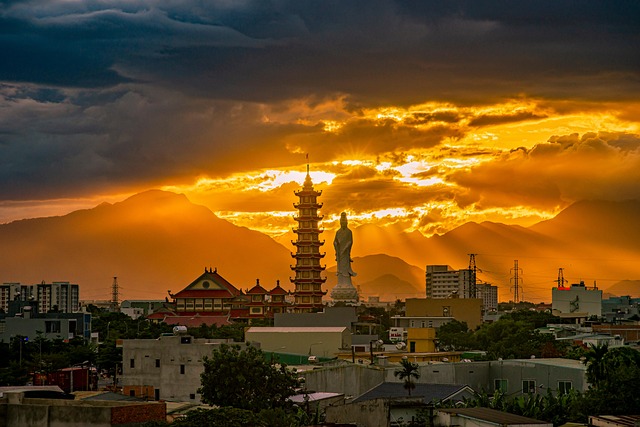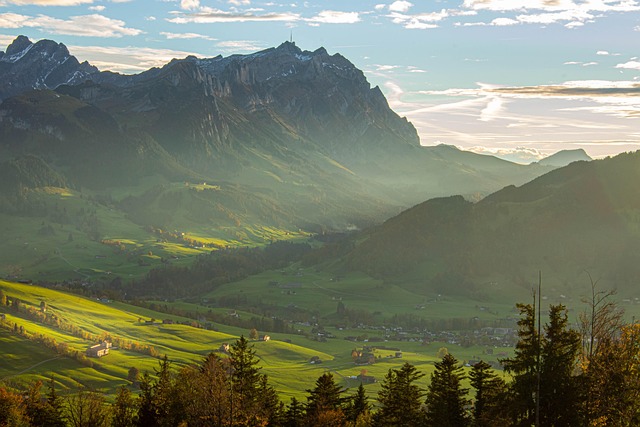Across continents, communities gather to mark the sacred rhythms of life—Christmas, Ramadan, Diwali, Easter, and many other holidays that weave the fabric of human spirituality. Yet the beauty of these observances is sometimes clouded by misunderstandings, competing interpretations, and a growing sense of isolation. In the midst of this backdrop, a quiet yet urgent plea echoes from the heart of countless faith leaders, educators, and ordinary believers: we must nurture unity without erasing our distinct identities. This article explores the historical roots of religious celebrations, the obstacles that threaten cohesion, and practical ways to transform the plea into everyday action.
Historical Roots of Celebration
Religion has always been a communal language, one that invites people into shared rituals, stories, and symbols. From the ancient stone circles of the Druids to the bustling marketplaces of medieval pilgrimages, celebrations have served as touchstones for collective memory. These gatherings provided safety nets—social support, mutual aid, and a sense of belonging—while also offering a platform to transmit values across generations. In many societies, holiday seasons became the times when community ties were most visibly renewed: families would gather to share a meal, neighbors would exchange gifts, and entire towns would align their schedules to participate in rites of passage. The rhythm of these shared moments, marked by music, dance, and prayer, reinforced the idea that belonging transcended individual differences. The historical record, therefore, offers us a blueprint: celebration is inherently unifying, when approached with openness and humility.
Modern Challenges to Unity
However, the modern world presents new complexities. Globalization, rapid migration, and the rise of digital communication have amplified both cultural exchange and cultural friction. Social media platforms can spread misinformation or sensationalize minor theological differences, leading to polarization. Moreover, institutionalized sectarianism in some regions has entrenched divisions, making interfaith dialogue a daunting task. The very practices that once fostered communal solidarity are sometimes reduced to spectacle, stripped of meaning, and commercialized. As a result, the sense of shared purpose that once defined holiday gatherings is eroding, replaced by a sense of “us versus them.” In this climate, the plea for unity must confront not only theological differences but also economic disparities, political agendas, and the psychological tendency to fear the unfamiliar.
The Core of the Plea
The core of the plea lies in recognizing that religious celebrations are not merely about worshipping a deity or reciting prayers; they are also acts of community building. The call for unity does not demand uniformity of practice or belief. Instead, it invites believers to honor the diversity that enriches faith traditions while committing to shared values—compassion, generosity, and stewardship of the Earth. This plea can be articulated in several dimensions. First, by fostering spaces where people from different faiths can share personal narratives, we break down stereotypes and build empathy. Second, by encouraging collaborative projects—such as neighborhood clean‑ups or shared charity drives—celebrations become conduits for tangible cooperation. Third, by integrating inclusive language in liturgies and public proclamations, institutions signal that every voice matters. Finally, the plea calls for humility, reminding congregations that no single interpretation holds a monopoly on truth, and that humility allows room for growth and mutual respect.
Three Pillars of the Plea
- Dialogue: open conversations across traditions.
- Collaboration: joint community service projects.
- Inclusivity: language and practices that welcome all.
From Words to Action
Turning the plea into practice requires concrete steps at multiple levels. Communities can start by establishing interfaith councils that meet before major holidays to coordinate joint services or interfaith meals. Schools can integrate comparative religious studies into their curricula, emphasizing shared narratives such as the story of Abraham, the teachings of compassion, or the principles of justice. Local governments can issue proclamations that honor the diversity of holiday observances, ensuring that public spaces are accessible and welcoming to all. Worship leaders might invite guests from other traditions to lead portions of services, offering a living testament to unity. At the individual level, people can extend invitations to neighbors of different faiths to participate in their holiday celebrations, or volunteer together for community outreach. By embedding the plea into everyday actions—through dialogue, cooperation, and mutual respect—faith communities can transform abstract longing into concrete solidarity.
Living Examples of Unity
Across the globe, we already see successful embodiments of the plea. In the city of New York, the annual Thanksgiving ceremony includes a diverse panel of faith leaders who share messages of gratitude that transcend denominational lines. In Kerala, India, Hindu, Christian, and Muslim families gather in a single village for a communal feast during the festival of Onam, showcasing centuries of coexistence. In the city of Bethlehem, Christians, Muslims, and Druze jointly oversee a spring harvest festival, blending liturgical prayers with a shared harvest blessing. These stories illustrate that when we deliberately open our gates and invite others, the spirit of unity becomes a living, breathing practice that enriches everyone involved.
“When we sit together around a single table, the language of faith becomes a shared story, and our differences transform into strengths.” — Community Leader, Bethlehem
Conclusion: A Call to Everyday Unity
Ultimately, the plea for unity in religious celebrations is a call to action that resonates with the very essence of faith: love, respect, and shared humanity. While challenges persist—political tension, cultural misunderstandings, and commercial pressures—the opportunity to rebuild bridges through shared rituals remains potent. By honoring diversity, fostering dialogue, and translating aspiration into tangible cooperation, faith communities can turn each holiday into a testimony of collective hope. In doing so, we honor not only our traditions but also the common destiny that binds all people. Let this plea serve not as a distant aspiration but as an everyday commitment that transforms the way we celebrate, ensuring that the lights of our festivals shine brighter when illuminated together.



